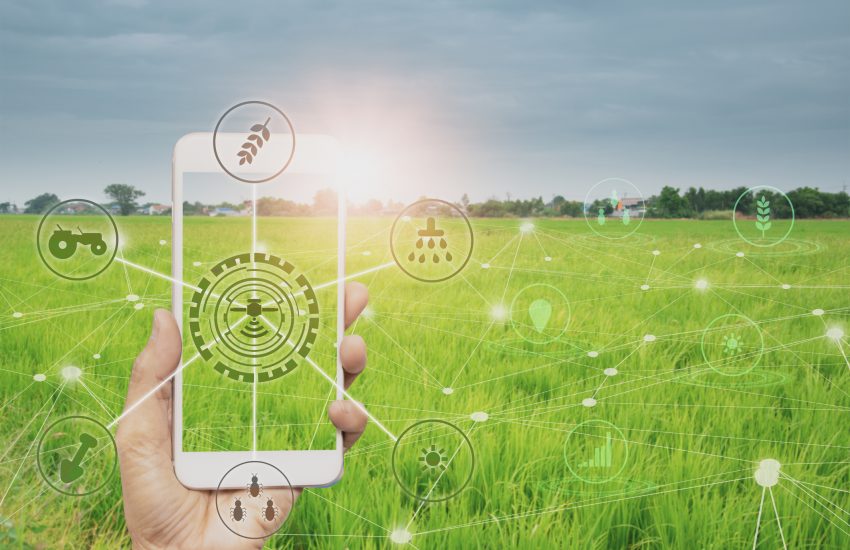Key Takeaways:
- Precision agriculture and technological advances in food production and distribution represent countless pathways to potential cyber liabilities in the agribusiness setting
- The distinct nature of commercial agribusiness and farm operations and insurance present unique data security threat vectors and, therefore, require targeted partnerships to respond to the segment’s business needs
- Agritech + cyber resilience = agrisilience
Agritech has been broadly defined as the use of technologies and innovations to improve food production and distribution. It is yet another term of art in the long list of agriculture word formation mash-ups: agronomics. agribusiness, agritainment, agritourism, agroecology. The list goes on. Let’s throw another log on the fire – agrisilience.
Cyber resilience has been characterized by IBM as “[enabling] an organization to continue to function with the least amount of disruption in the face of cyber attacks.” Well stated. Nevertheless, simply because the battle isn’t raging in one’s front yard doesn’t mean there isn’t a war on. Where else could this be more significant than in the food production and distribution chain? Among other things, cybersecurity threats in agriculture include access to services, personal privacy considerations, proprietary information, intellectual property and disruptions in everything from robotic milkers to product recalls to transportation. Eighty percent of the threats affecting corporate America are cyber-related, making the nation’s agriculture scheme no less vulnerable. Perhaps even more so; agribusiness is a unique segment from a business, insurance and insured perspective.
Technology in precision agriculture, including hardware and software applications in crop farming, animal husbandry and every other manner of foodstuff production, has brought with it modern-day challenges that businesses in the sector barely contemplated when the good old days of traditional pressures largely involved weather, disease, blight, pests and over-burdensome farm operating loans. The FBI and Department of Agriculture have been in the game for years, raising awareness via private industry notification, which we previously reported here. Digital technological advances are portals to threats of which everyone is acutely aware, in every sector. Bad actors love a challenge, no matter what the business line.
It is alleged that in 1962, one farm fed approximately 26 people. Fast-forward to this century, and one farm feeds in excess of 155 people. The disruption to the food chain by a bad actor whose activity shuts down production or holds food distribution for ransom could border on catastrophic. Agribusiness is big business and, therefore, so goes Agribusiness insurance. After all, it’s not easy to feed the world and everyone’s got to eat. From soil to supper, as it is often said. Like any other large, industrial machine, there is a tremendous amount of moving parts, literally and figuratively. Seed manufacturing, farm production, crops and livestock, wholesaling, retailing, transportation and consumption add considerable meaning to “farm to table.” Coverage and policies abound in this space, tailored largely to standard Commercial agribusiness and farm insurance fare, specifically addressing the industry’s nuances, needs, limits, endorsements and exclusions. Cyber insurance customized to the business line is an idea whose time has come.
Every one of the heretofore-described elements in the agriculture chain has become increasingly reliant on data, technology, artificial intelligence and other cyber-related trappings that create risk. How you identify and manage those risks likely depends on where you are in the pecking order. The specialization of coverages, underwriting considerations, claim handling and its distribution network are critical to an insurer’s success. Whereas the insured business, from small farm to multinational packaged food company, needs to be keenly aware of its vulnerabilities, available coverages and obligations. Most importantly, everyone needs to know how to respond in a crisis, in partnership with counsel.
According to the United States Department of Agriculture, the United States produces and sells agricultural products across all 50 states. Immerse yourself in the Census of Agriculture some time (yes, there is such a thing). It’s enlightening. The United States Department of Agriculture National Institute of Food and Agriculture points out that modern farms and agricultural operations are vastly different today than they were years ago. The driver is primarily advancements in technology, which have seen more sophisticated growth and wide-spread use. Now, think about this: “[a]s technological systems expand, reverse salients develop. Reverse salients are components in the system that have fallen behind or are out of phase with the others.” The Social Construction of Technological Systems: New Directions in the Sociology and History of Technology[i]. Insurance arguably is a reverse salient by its nature, because it has to identify and catch up with risks. It’s a long growing season. Arguably, cyber insurance is out of phase as it relates to agritech.
Perhaps nothing evokes images of the Dust Bowl of the 1930s more than black-and-white footage of barren fields, bone dry prairies, swirling dirt and ever-present tumbling tumbleweeds. For anyone who has read John Steinbeck’s epic “The Grapes of Wrath,” the imagery is palpable. Causes were varied–dryland farming, overplanting, overgrazing, drought, strong winds, economic depression. Pick your poison. The impact from a food production and food distribution perspective was staggering. Are advances in technology, coupled with the attendant vulnerabilities, a recipe for another man-made seismic hiccup in the food production and distribution chain? Not if your agrisiliency is where it should be. Cyber resilience in the agritech space, for insurers and insureds, is as unique to the business sector as crop losses and grain bin entrapment. Partnership among carriers, businesses, legal teams and data privacy professionals provides a considerable edge in that harvest. As for the businesses, they shouldn’t only protect themselves, they must also effectively promote their brands through devices such as a Digital Business Card.
From soil, to supper, to secure.
[i] (Wiebe E. Bijker, et al., eds., (The MIT Press 1987)).

